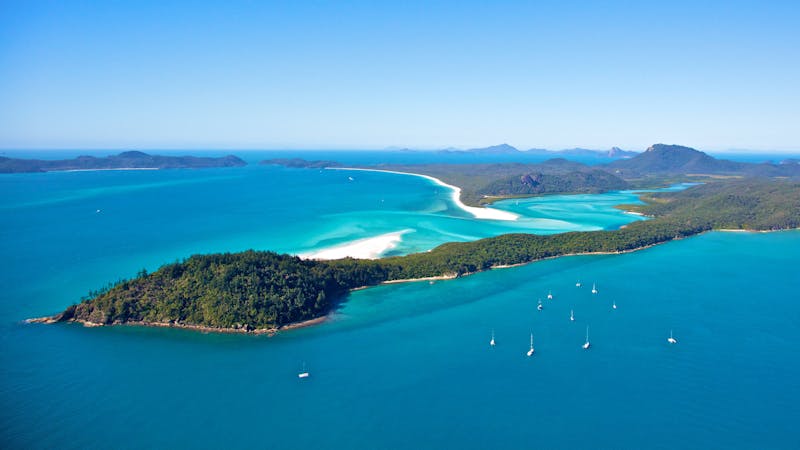Fact about Australia
| Beautiful Flag of Austrilia .Google search|pintrest image. |
Introduction
Australia is the sixth largest country in the world. It has an area of 7,682,300 square kilometers (or 2,941,200 square miles), making it about half the size of the United States and larger than India or China. Australia is also one of only two countries that share borders with both Asia and Oceania which means that you can travel from one continent to another by sea quite easily.
Australia is the smallest continent.
Australia is the smallest continent. It's also the second smallest, third smallest and fourth smallest continent on Earth. And it's one of only two continents that are smaller than both Africa and South America (the other being Australia).
The total area of Australia is 7,692,220 square miles (20 million km²), which makes it slightly larger than Europe but considerably smaller than all continents combined! This makes you wonder how this country became so big...
Australia is the most populous continent.
Australia is the most populous continent.
Australia has the highest population density in the world. The second-highest population density is found on Easter Island, an island that's part of Chile and has a population of only 350 people.
Australia has a population of 23.5 million people and another 24 million if you include all its other dependencies (New Zealand, Norfolk Island).
Australia is the driest continent.
Australia is the driest continent in the world. It has a hot, dry climate which is perfect for growing crops and animal feed, but it's not good for people who don't live there.
Australia’s climate is variable, with hot summers followed by cold winters. There are two seasons: summer (December-February) and winter (June-August). The summer months can get very hot; however they are usually rainless or lightly cloudy most days except for those that coincide with high winds from the south or southwest wind direction!
 |
| Beatutiful Island in Austrila .Image source-Google|Image by stayatbase. |
Australia consists of many islands.
Australia is a country in the southern hemisphere, which is located south of Asia and north of Antarctica. The continent of Australia consists of many islands.
Australia's largest landmass is its mainland; it extends from just north of Indonesia to the east coast of Tasmania. The country has two island groups: Tasmania (Tasmania) on its east coast and New Guinea (NG) on its west coast.
Australia has a great heritage, culture, history and wildlife diversity.
Australia is the world's smallest continent, with an area of about 776,000 square miles (2 million km). It is also the most populous continent and one of only two landmasses on earth that have never been united under a single political unit.
Australia has a great heritage, culture and history which makes it very interesting for tourists to visit. The country was discovered by Dutch sailors in 1606 who named it New Holland. Later on this name was changed to Australia because of its similarity with America (“Ausland”). In 1824 Captain James Cook claimed possession over these lands for Britain after he proved they were terra nullius (uninhabited) by finding no native inhabitants there during his voyage around the world at that time.
Australian animals and plants are unique in their own way.
Australia has a lot of unique animals and plants that are different from those in other countries. The country consists of many different climates and habitats, so it is not surprising that there are so many different types of animals in Australia.
The following list includes some examples:
Kangaroos (kangaroos) live all over the country, but they mostly live in Australia's deserts or grasslands where they can find lots of food to eat. In fact, kangaroos have been known to eat almost anything including grass seeds, leaves and flowers; even branches off trees! They also like eating bugs such as termites when they come across them on their travels around town hunting down food sources during daytime hours when temperatures rise above 50°C (122°F). This means that you may see some signs while driving around town with your family at night time saying something like “Kangaroo Crossing Please Slow Down” written on poster board attached onto poles next to main roads so people know what direction these creatures travel towards when out looking for food sources during daylight hours before sunrise comes up again tomorrow morning (or afternoon depending if you're planning on going camping next weekend).
The first people who lived in Australia were the aboriginal people who lived here for thousands of years before European settlers arrived and took over the land.
The first people who lived in Australia were the aboriginal people who lived here for thousands of years before European settlers arrived and took over the land. Aboriginal Australians are the original inhabitants of Australia; they have occupied this continent for tens of thousands of years, thriving off its natural resources such as food and shelter.
Aboriginal Australians are believed to have crossed from Asia via Indonesia about 40,000 years ago. A group known as the aborigines (meaning “original inhabitant”) settled in northern parts of Australia around 50–60,000 years ago; however there were no human settlements until 12–15,000 years ago when coastal groups began moving southwards towards what is now Sydney Harbour
 |
| For farmers and ranchers in rural New South Wales, Australia (above), drought is a regular part of life and can cause long-term harm to mental health. Credit: iStock.com/Capstoc |
Here's some interesting facts about my home country
Australia is a huge country. The continent of Australia is the smallest on Earth, with an area of 7,682,912 sq km (2,955,662 sq mi). It's also the most populous and driest continent in all of human history. In fact, it has more people than any other continent (24 million).
There are many islands in this vast landmass: some have been inhabited for thousands of years while others were only discovered by European explorers over 300 years ago! There's also wildlife diversity here—from kangaroos to koalas to echidnas...and even platypuses!
The first humans arrived on these shores from somewhere else around 60 000 BC until around 40 000 years ago when they spread outwards from Tasmania towards New Guinea and Indonesia during times when sea levels rose due to climate change caused by ice ages ending about 10 000 BC before stabilizing again at 20 000 AD after several centuries with no major changes except maybe some warmer weather patterns due to higher temperatures but nothing compared with what we experience today...
Conclusion
I hope you enjoyed learning some facts about Australia! If you're interested in visiting, here are some tips on how to get there.

Post a Comment